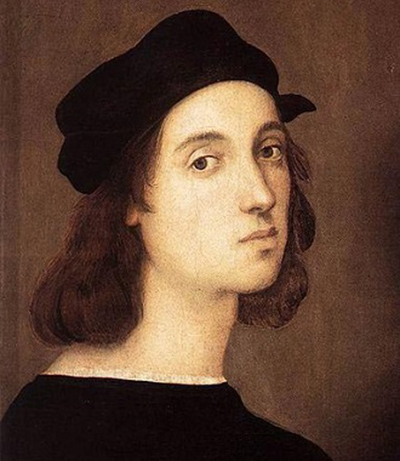Self-Portrait by Raphael is one of the artist's masterworks displayed in the Uffizi Gallery in Florence. Art historians consider it the most expressive and clear reflection of Raphael.
The Renaissance artist executed the portrait during 1504-1506 using exquisite oil colours in warm and deep tones. The painting's origin has been debated for some time by various art historians due to a copy which appeared in a bank vault. However, the original portrait was part of the rich art collection of Duke Leopoldo de' Medici. It was registered in 1675 and included on the list of the Uffizi Gallery in 1890. However, due to the poor conservation quality of the painting, art historians still aren't sure about attributing it to Raphael. The soft lighting and smooth play of shadows persuaded many scholars to attribute the masterpiece to Leonardo, but others argued the absence of complex facial features.
The portrait reflects the artist's serenity and indicates internal peace. The young man's face is immaculately represented and contoured by fine brush strokes. The contrast between his light skin and dark garment indicates Raphael's duality. It's a combination of angelic peace and the inside battle of artistic forces. The background of the painting is simple and only features the artist's shadow. Again, an indication of the artist's complex personality. His clear eyes are pointing downwards which suggests a subordination of the artist to his own art. His purpose is to serve his artistic persona. The portrait features the artist's exquisite and soft facial characteristics. His mid-length hair contours his face in a delicate way by use of deep and well-defined shadows. He seems to have a neutral expression, which suggests a state of meditation and understanding.
The artist acknowledges his purpose and has accepted his mission. Although Raphael uses soft tones, the white edge of his black garment allows for a transition. Raphael smoothly guides the viewers from his face towards the lower end of the painting. The Self-Portrait includes various symmetries between its elements such as the black colour of the artist's headdress and his clothes, or the perfectly distanced eyes. Raphael proves his mastery in providing balance throughout the entire work of art.
The portrait comprises an underneath layer which has been revealed through recent laser and technical examinations. This is proof that the Self-Portrait by Raphael is indeed his. The beautiful representation of the young man can easily be related to the masculine ideal of the Renaissance period. However, it also became a reference for the artist himself. The controversial masterpiece executed by Raphael Sanzio is one of his greatest works. The Self Portrait depicts an exact representation of the artist through his own eyes. Raphael uses different techniques to emphasize his dual existence. Although Self-Portrait currently displayed at the Uffizi Gallery in Florence is only 47.5 x 33 cm in size, it manages to integrate the magnitude of the artist.




